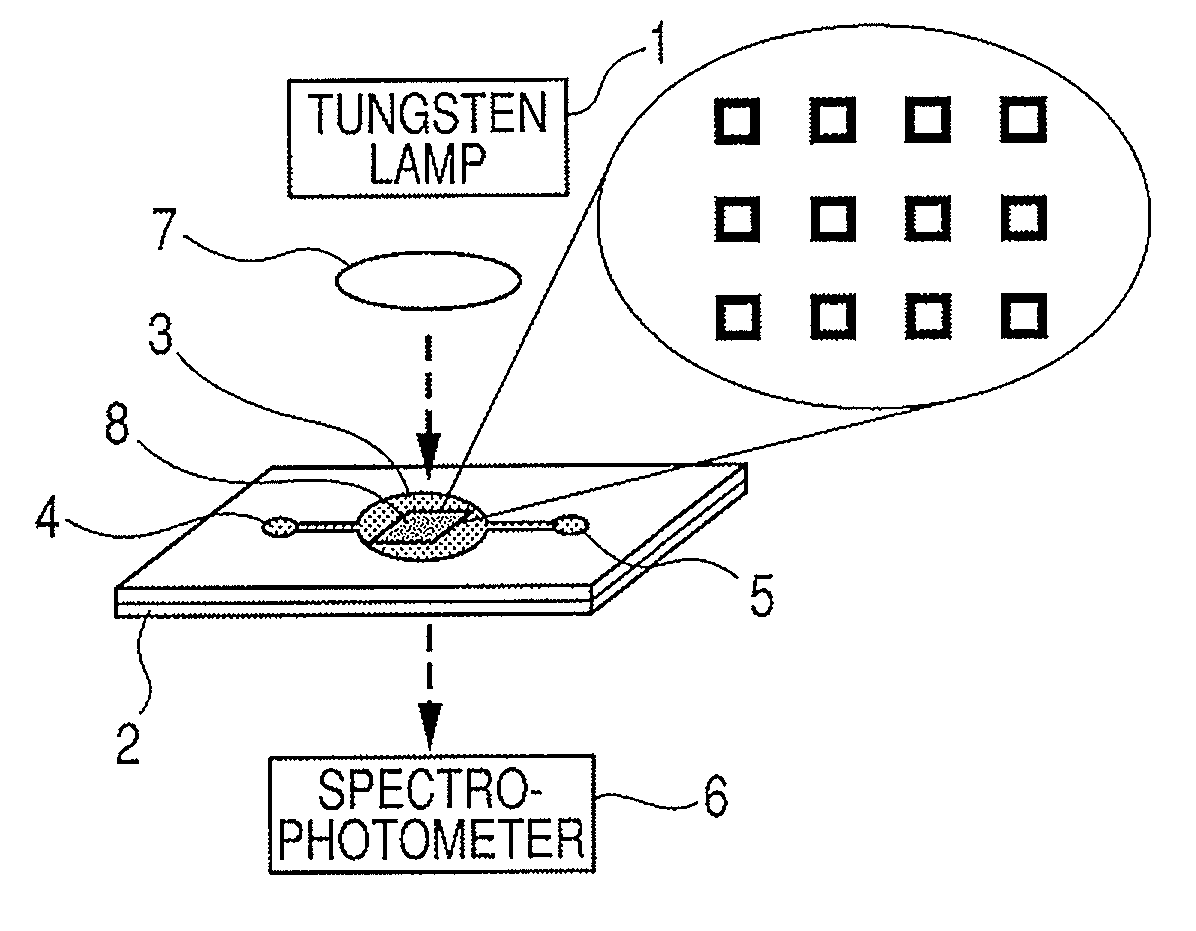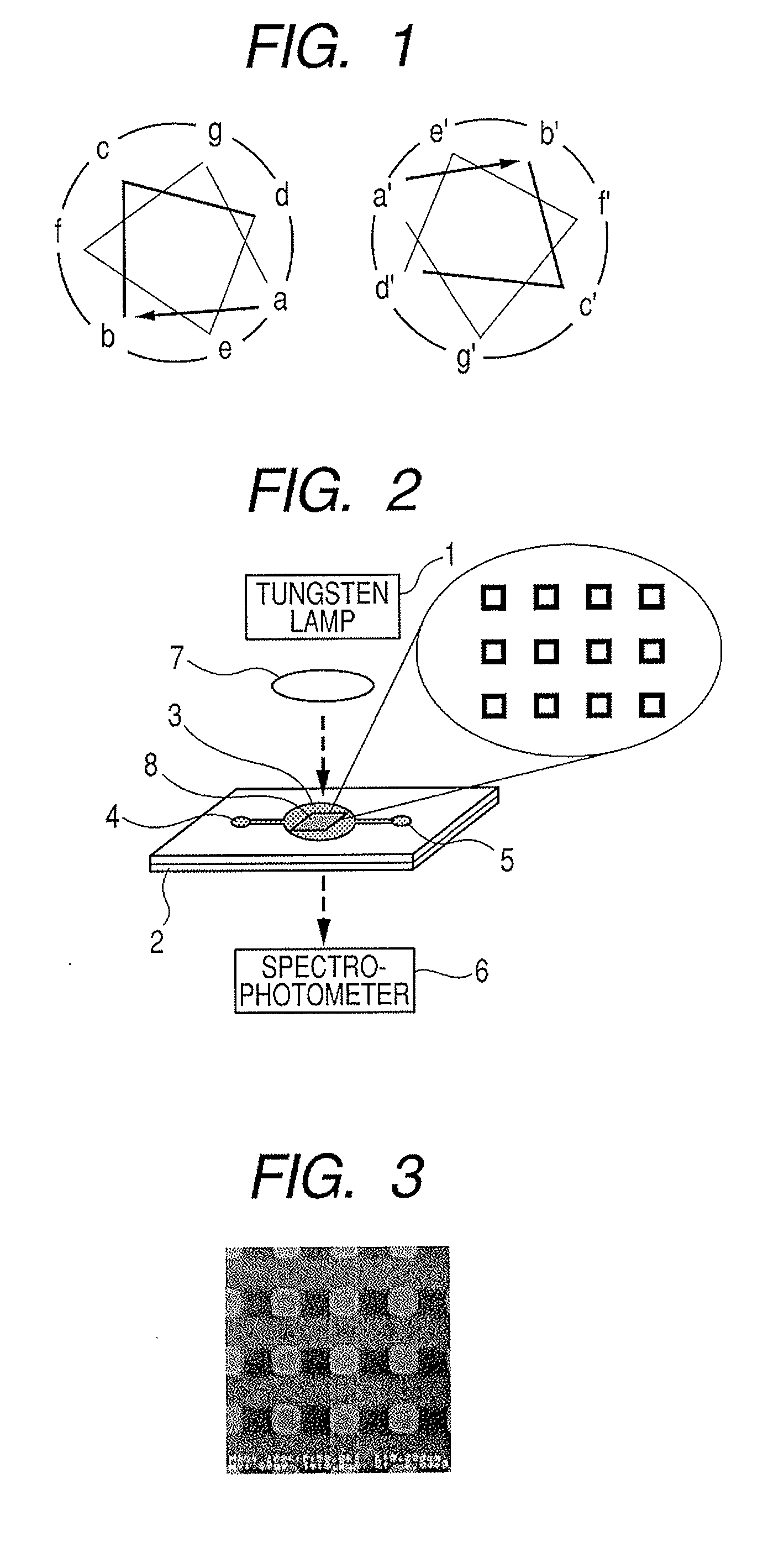Bispecific capturing molecule
a target substance and molecule technology, applied in the field of target substance capturing molecule, can solve the problems of inability to produce an antibody specifically binding to such a target substance in the immune system serving as a bio-defense system, inability to improve the binding ability of efficient genetic engineering methods, and inability to achieve the effect of improving molecular stability, improving the yield of individual polypeptide chains in production steps and purification steps
- Summary
- Abstract
- Description
- Claims
- Application Information
AI Technical Summary
Benefits of technology
Problems solved by technology
Method used
Image
Examples
example 1
Preparation of Human-Lysozyme (HuL) Bound VHH-Encoding DNA Fragment
[0143]The DNA of human-lysozyme bound VHH is synthesized by an overlap PCR with reference to the sequences set forth in Nature, 2003, 424, p 783-788, PDB: 10P9 (Sequence ID Nos. 1 and 2) of HuL bound VHH. The PCR is performed by using a pfu-turbo kit (manufactured by Stratagene) in accordance with the method recommended by the manufacturer. Restriction site NcoI is constructed at the 5′ end and restriction site NotI at the 3′ end. The obtained PCR fragment is designated as HuLA (Sequence ID Nos. 3 and 4).
Sequence ID No. 2 QVQLQESGGGSVQAGGSLRLSCSASGYTYISGWFRQAPGKEREGVAAIRSSDGTTYYADSVKGRFTISQDNAKNTVYLQMNSLKPEDTAMYYCAATEVAGWPLDIGIYDYWGQGTEVTVSSSequence ID No. 4 PWQVQLQESGGGSVQAGGSLRLSCSASGYTYISGWFRQAPGKEREGVAAIRSSDGTTYYADSVKGRFTISQDNAKNTVYLQMNSLKPEDTAMYYCAATEVAGWPLDIGIYDYWGQGTEVTVSSAA
example 2
Preparation of Human-Lysozyme (HuL)-Bound VH-Encoding DNA Fragment
[0144]DNA encoding a VH domain shown in Sequence ID Nos. 5 and 6 is synthesized by an overlap PCR with reference to the sequence of the VH domain of Fv (PDB: 1BVK) binding to HuL at a different site from in Example 1. The PCR is performed by using a pfu-turbo kit (manufactured by Stratagene) in accordance with the method recommended by the manufacturer. The fragment is designed so as to have restriction site NcoI at the 5′ end and restriction site NotI at the 3′ end. The obtained PCR fragment is designated as HuLB.
Sequence ID No. 6 QVQLQESGPGLVRPSQTLSLTCTVSGFSLTGYGVNWFRQPPGREREWIGMIWGDGNTDYNSALKSRVTMLKDTSKNQFSLRLSSVTAADTAVYYCARERDYRLDYWGQGSLVTVSSG
example 3
Preparation of an Expression Plasmid of HuL-Bound VH-Protein HulA / HulB
[0145]Using the PCR fragments HulA / HulB obtained in Example 1 and Example 2, an expression plasmid of HuL-bound VH-protein is separately prepared. The vector used herein is pET-24d (manufactured by Novagen).
[0146](1) HuLA obtained in Example 1, HuLB obtained in Example 2, and pET-24d are separately digested by restriction enzymes NcoI and NotI (both are manufactured by New England Biolabs) in accordance with the method recommended by the manufacturer and described in the technical bulletin.
[0147](2) The resultant solutions containing enzyme reaction products are separately subjected to agarose gel electrophoresis.
[0148](3) An about 0.4 kbp fragment is cleaved out from a reaction product in a HuL-B reaction solution and a 5.3 kbp fragment from a pET-24d reaction solution and separately purified by a purification kit (manufactured by Promega, trade name: Wizard SV Gel and PCR Clean-Up System).
[0149](4) The DNA fragm...
PUM
| Property | Measurement | Unit |
|---|---|---|
| thickness | aaaaa | aaaaa |
| size | aaaaa | aaaaa |
| pH | aaaaa | aaaaa |
Abstract
Description
Claims
Application Information
 Login to View More
Login to View More - R&D
- Intellectual Property
- Life Sciences
- Materials
- Tech Scout
- Unparalleled Data Quality
- Higher Quality Content
- 60% Fewer Hallucinations
Browse by: Latest US Patents, China's latest patents, Technical Efficacy Thesaurus, Application Domain, Technology Topic, Popular Technical Reports.
© 2025 PatSnap. All rights reserved.Legal|Privacy policy|Modern Slavery Act Transparency Statement|Sitemap|About US| Contact US: help@patsnap.com


